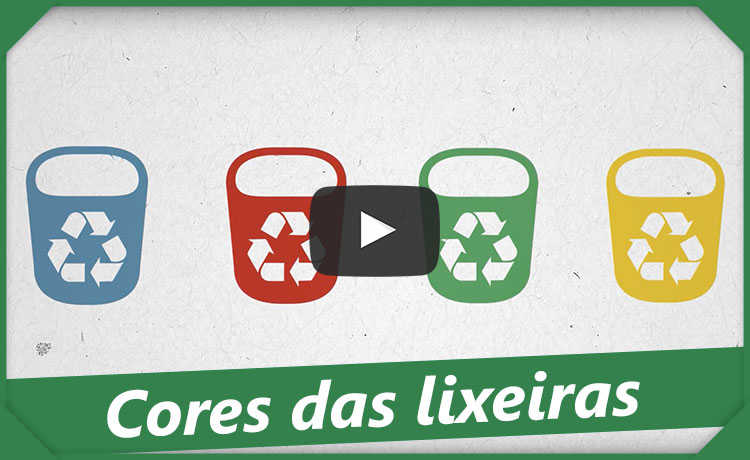UN SDG: 17 Sustainable Development Goals
The UN SDGs establish practices to be adopted by member countries to promote sustainable development in the world

Image: Reproduction
The 193 member countries of the UN (United Nations) have guided their decisions following a new agenda: they are the Sustainable Development Goals (SDGs). Launched in September 2015, during the Sustainable Development Summit, at the UN General Assembly, the agenda consists of 17 items - such as eradicating poverty, hunger and ensuring inclusive education - that must be implemented by all countries in the world until 2030.
States and civil society discussed their roles in achieving the 17 new Sustainable Development Goals (SDGs). The SDGs were based on the eight Millennium Development Goals (MDGs), which set targets for the period between 2000 and 2015 and made considerable progress in reducing global poverty, in accessing education and drinking water. The UN considered the Millennium Goals a success and proposed to continue the work already carried out, setting new goals for the next 15 years. Thus emerged the Sustainable Development Goals.
Find out what the 17 Sustainable Development Goals (SDGs) are:
Goal 1: End poverty in all its forms, everywhere (SDG 1)
Yes, it is an ambitious goal. Since 1990, the number of people in extreme poverty has fallen by more than half, from 1.9 billion in 1990 to 836 million in 2015. But much remains to be done: about one in five people in developing regions lives at less than $1.25 a day, most of them are in South Asia and Sub-Saharan Africa.
Goal 2: End hunger, achieve food security and improve nutrition, and promote sustainable agriculture (SDG 2)
Malnutrition, which causes 45% of deaths in children under five years of age, is one of the focuses of this SDG. One in four children in the world is stunted and the proportion increases from one to three in developing countries. 66 million primary school-age children go to school starving, 23 million of them in Africa alone. Agriculture, in turn, is the largest single employer in the world, supporting 40% of the global population. 500 million small farms around the world, most of them still dependent on rain, provide up to 80% of the food consumed in most developing countries.
Goal 3: Ensure a healthy life and promote well-being for all, at all ages (SDG 3)
The third objective of sustainable development is focused on child and maternal health and the fight against HIV/AIDS. An estimated six million children die each year before their fifth birthday, and only half of women in developing regions receive the recommended amount of medical care. In addition, at the end of 2013 there were around 35 million people living with HIV.
Goal 4: Ensure inclusive, equitable and quality education and promote lifelong learning opportunities for all (SDG 4)
Primary education enrollment in developing countries reached 91% in 2015, but 57 million children remain out of school, with more than half of them living in sub-Saharan Africa. The world has achieved equality in primary education between girls and boys, but few countries have achieved this goal at all levels of education.
Goal 5: Achieve gender equality and empower all women and girls (SDG 5)
In sub-Saharan Africa, Oceania and West Asia, girls still face barriers to entering both primary and secondary school. Women in North Africa hold less than one in five paid jobs in sectors other than agriculture. There are only 46 countries in which women occupy more than 30% of the seats in the national parliament in at least one chamber - Brazil is not one of them.
See the talk by writer Chimamanda Ngozi Adichie on the theme of gender equality:
Goal 6: Ensure the availability and sustainable management of water and sanitation for all (SDG 6)
This sustainable development goal seeks to help the 2.5 billion people who do not have access to basic sanitation services such as toilets or latrines. Every day, an average of 5,000 children die from preventable water and sanitation-related diseases.
Goal 7: Ensure reliable, sustainable, modern and affordable access to energy for all (SDG 7)
Worldwide, one in five people still lack access to modern electricity – a total of 1.3 billion. Three billion people depend on wood, charcoal, charcoal or animal waste for cooking and heating, with energy being the main contributor to climate change, accounting for about 60% of total global greenhouse gas emissions stove. Renewable energy currently constitutes only 15% of the global energy pool.
Goal 8: Promote sustained, inclusive and sustainable economic growth, full and productive employment and decent work for all (SDG 8)
Global unemployment rose from 170 million in 2007 to about 202 million in 2012, with approximately 75 million young women or men. There are around 2.2 billion people living below the poverty line and eradication of the problem is only possible through well-paid and stable jobs.
Goal 9: Build resilient infrastructure, promote inclusive and sustainable industrialization and foster innovation (SDG 9)
About 2.6 billion people in the developing world struggle to access electricity. 2.5 billion people worldwide do not have access to basic sanitation and nearly 800 million do not have access to water. Between 1 and 1.5 million people do not have access to quality telephone service. In many African countries, especially low-income ones, infrastructure limits affect as much as 40% of business productivity.
Goal 10: Reduce inequality within and between countries (SDG 10)
Despite all the advances, income inequality increased by an average of 11% in developing countries between 1990 and 2010. More than 75% of families live in societies where income is worse distributed than in the 1990s. Despite the decline in maternal mortality in most developed countries, women in rural areas are three times more likely to die in childbirth than those living in urban centers.
Goal 11. Make cities and human settlements inclusive, safe, resilient and sustainable (SDG 11)
By 2030, about 60% of the world's population will live in urban areas - currently there are 3.5 billion, which represents half of the population. 828 million people live in slums and the number continues to grow. Cities occupy only 2% of the Earth's space, but use between 60 and 80% of the energy produced and cause 75% of carbon emissions.
Objective 12. Ensure sustainable production and consumption patterns (SDG 12)
This sustainable development goal seeks to contain less than encouraging statistics: 1.3 billion tons of food are wasted every day, 120 billion dollars are lost every year through the use of high-energy light bulbs, more than 1 billion people still don't have access to clean water. In addition, the global population is expected to reach 9.6 billion people by 2050 - it would take about three planets to provide the natural resources that sustain today's lifestyles.
Goal 13. Take urgent action to combat climate change and its impacts (SDG 13)
The SDG recognizes that the United Nations Framework Convention on Climate Change (UNFCCC) is the primary international intergovernmental forum for negotiating the global response to climate change. Containing global warming and melting ice caps are two of the focuses.
Goal 14. Conservation and sustainable use of oceans, seas and marine resources for sustainable development (SDG 14)
Our oceans need to be taken care of: they cover three-quarters of the Earth's surface, contain 97% of the planet's water, and represent 99% of Earth's life in terms of volume. Fish catch levels are close to the production capacity of the oceans, with 80 million tons of fish being caught each year. It is the oceans that absorb around 30% of the CO2 produced by humans, cushioning the impacts of global warming. They are also the world's largest source of protein, with more than 3 billion people relying on the oceans as their primary source of food.
Objective 15. Protect, restore and promote the sustainable use of terrestrial ecosystems, sustainably manage forests, combat desertification, halt and reverse land degradation, and halt biodiversity loss (SDG 15)
Thirteen million hectares of forests are being lost each year, with an estimated 1.6 billion people depending on them for their livelihoods - this includes 70 million indigenous people. Furthermore, forests are home to more than 80% of all species of terrestrial animals, plants and insects.
Goal 16. Promote peaceful and inclusive societies for sustainable development, provide access to justice for all and build effective, accountable and inclusive institutions at all levels (SDG 16)
UNHCR (United Nations High Commission for Refugees) registered in 2014 about 13 million refugees. Developing countries lose around 1.26 trillion every year to corruption, bribery, theft and tax evasion. The rate of children who drop out of primary school in countries in conflict reached 50% in 2011, which adds up to 28.5 million children. These are numbers that need to be contained.
Objective 17. Strengthen the means of implementation and revitalize the global partnership for sustainable development (SDG 17)
This SDG seeks to continue important achievements, as in the case of Official Development Assistance (OAD), which raised approximately 135 billion dollars in 2014. The number of users of Internet in Africa it almost doubled between 2011 and 2015 and by 2015, 95% of the world's population had cellular coverage.










